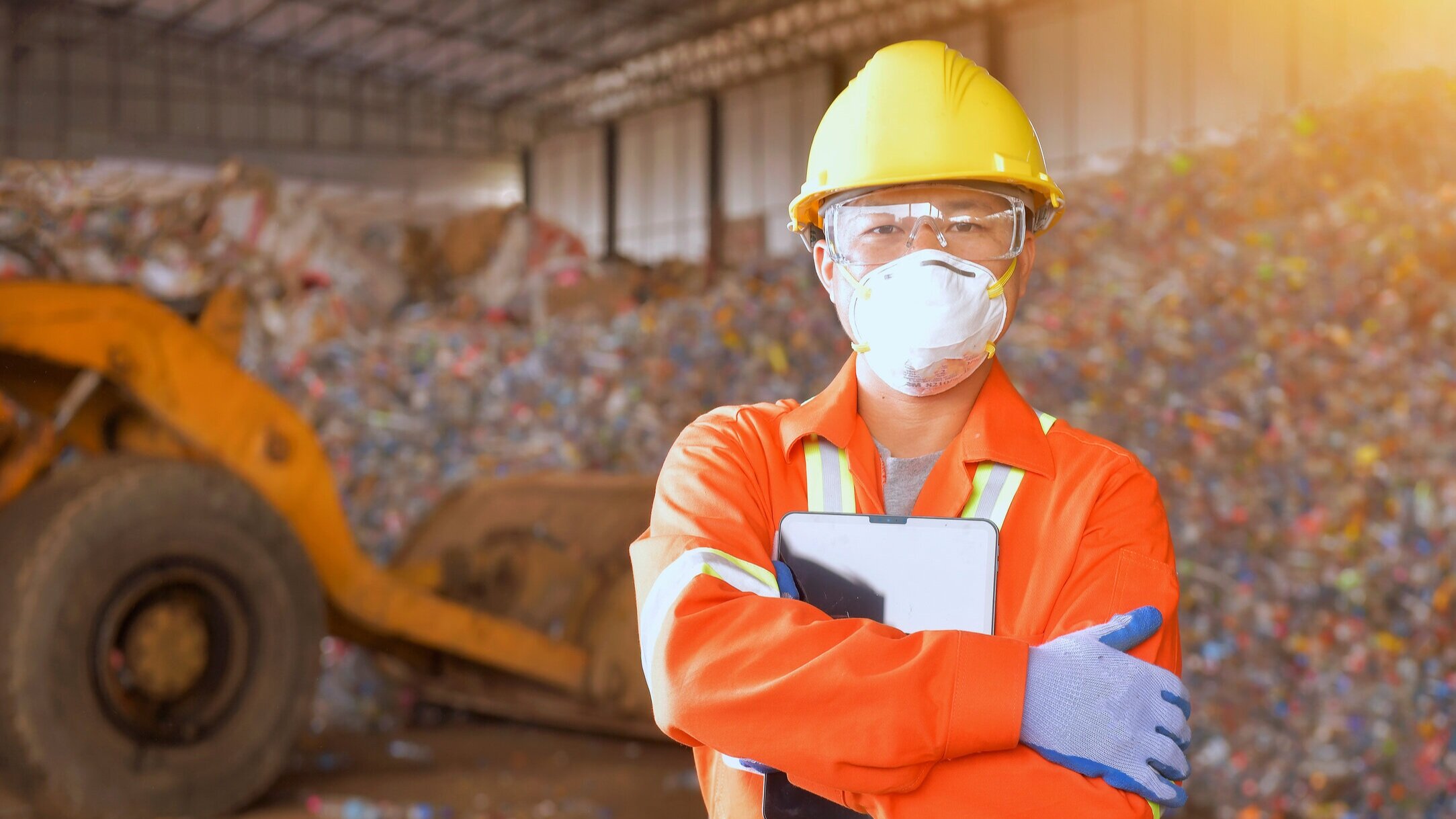
WHERE YOUR
RECYCLABLES GO
As the word “recycling” implies, transforming used materials into marketable products is a cycle, or circular process. After we place the correct items into our recycling bins, those materials go through many stages on their journey to becoming renewed products. Knowing your local recycling guidelines is very important to ensuring that the recycling process is successful, and that used materials can remain in beneficial use instead of being wasted at landfills or waste combustion facilities. Click below to explore the various stages of the circular recycling process:
STAGE 1: LOCALLY ACCEPTED ITEMS ARE PLACED IN RECYCLING BINS
Recyclable items begin their journey through the circular recycling process when they are placed in recycling bins at home, work, or on the go. For the rest of the process to be successful, it is important to know which items are accepted locally for recycling. Learn the ins and outs of your local recycling service by visiting the Know Your Local Guidelines page, and find additional tips on the How To Recycle Right page.
STAGE 2: RECYCLABLE ITEMS ARE COLLECTED AND TRANSPORTED
Next, recyclable items continue their journey by being physically transported to a transfer station or material recovery facility (MRF, pronounced “murf”). Some residents personally drive their recyclables to a transfer station, while others have theirs picked up from their home or apartment building by a municipal or private hauler. Note that from here on out, transportation happens between each major stage of the recycling process.
STAGE 3: ITEMS ARE SORTED BY THE MATERIAL THEY ARE MADE FROM
Once at a material recovery facility (MRF), the recyclable items go through a series of mechanical devices and hand sorting stations, which separates them by the type of material that they are made from, including various plastics, cardboard, paper, aluminum, steel, and glass. The sorted materials are then compressed into bales, similar to bales of hay. Finally, these bales of materials are sold to processors or manufacturers across the state, country, and world.
STAGE 4: SOME RECYCLABLES ARE CLEANED AND PREPROCESSED
At this stage of the recycling process, some recyclable material needs to be cleaned and refined before it can continue its journey to becoming a renewed product. For example, at a preprocessing facility for plastic food containers, plastic items are shredded, separated from any paper labels, cleaned of any adhesive, dirt, or food residue, and then dried. The refined plastic flakes are then sent to a manufacturer to be turned into marketable products.
STAGE 5: RECYCLABLE MATERIAL IS MANUFACTURED INTO RENEWED PRODUCTS
This is the stage of the cycle where used materials that have been traveling through the recycling system finally get transformed into marketable products, which reduces a manufacturer’s need for raw natural resources. For example, instead of relying entirely on cutting down trees for paper and cardboard products, a manufacturer can used recovered cardboard items to produce cereal boxes, paper towels, tissues, paper, or more cardboard.
STAGE 6: THE CYCLE RESTARTS WITH PRODUCTS MADE FROM RECYCLED CONTENT
Finally, recyclable material begins its next life as marketable products. When shopping, opt for items with the phrase “post-consumer recycled content” written on them. This means that some or most of those products were made from items that were originally put into recycling bins. Choosing products made with high percentages of “post-consumer recycled content” helps to support our local recycling systems by creating economic demand for recyclable materials. Once those items have served their purposes, the cycle restarts when we place locally accepted items back into the recycling bin.

